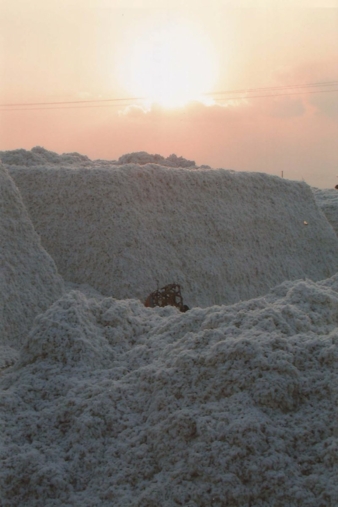12/01/2018 – Bremer Baumwollbörse — auf Deutsch lesen
Cotton - the Preferred Fibre for Sensitive Skin
Why is it that cotton as a natural plant fibre feels so good and is so wearable?
People with sensitive skin or a tendency to neurodermatitis are often advised when shopping to choose underwear, bedding or clothing made of 100% cotton. For who doesn’t know that feeling of buying a warm winter sweater and putting it on, only to find it scratches. In particular, those with a so-called atopic disposition, i.e. a stronger tendency to dry skin and neurodermatitis, can be particularly sensitive to scratchy textiles. Some even react with redness and eczema.
Why doesn´t scratches cotton?
According to experts, the main reason is the flat fibre structure of the cotton. Under a microscope, it is built up like the yearly rings of a tree, except that in the case of cotton they are day rings. The longer the fibre of the raw cotton, the finer it can be spun. The epitome of particularly fine and soft textiles is still those made of long and extra-long stapled, high-quality Egyptian or pima and sea island cotton. At the same time, the cotton fibre is very robust and also has other properties that make it particularly advantageous, for example, for use in the field of medicine. It can be washed at high temperatures and is therefore very hygienic. It binds moisture and body sweat well. In addition, cotton is hardly electrostatic, so does not give shocks or emit sparks.
The wearing comfort of textiles
For the perception of the skin, the fibre structure plays an essential, but not the decisive role. Silke Off, Head of the Department of Clothing Physiology at the Hohenstein Institute explains: "About two-thirds of the wearing comfort is determined by the heat and moisture management of the textile; about one third is attributable to the skin sensory comfort." The skin sensory expert advises consumers: "If the textile has no quality label to show that wearing comfort has been tested, I would recommend trying on the garment or, if that is not possible, at least testing the inside of the textile on the inside of the forearm." However, she also points out that it is not only the fibre properties that determine the wearing comfort of textiles, but also the way they are made into yarn or fabric. Indeed, in contrast to the neutral mechanical finishing, such as roughing or sanding, chemical agents are usually used to achieve certain properties such as 'non-iron' or 'water-repellent'. In addition to comfort, this raises the question as to what extent such treatment, including dyeing, could have an effect on the skin.
Cotton – a good feeling
According to recent studies, such as Cotton Inc.'s Global Lifestyle Monitor, cotton is the safest fibre for consumers. It is environmentally friendly because it is natural, renewable and biodegradable. Clothes made of cotton can easily be washed frequently and look good even after many washes.




